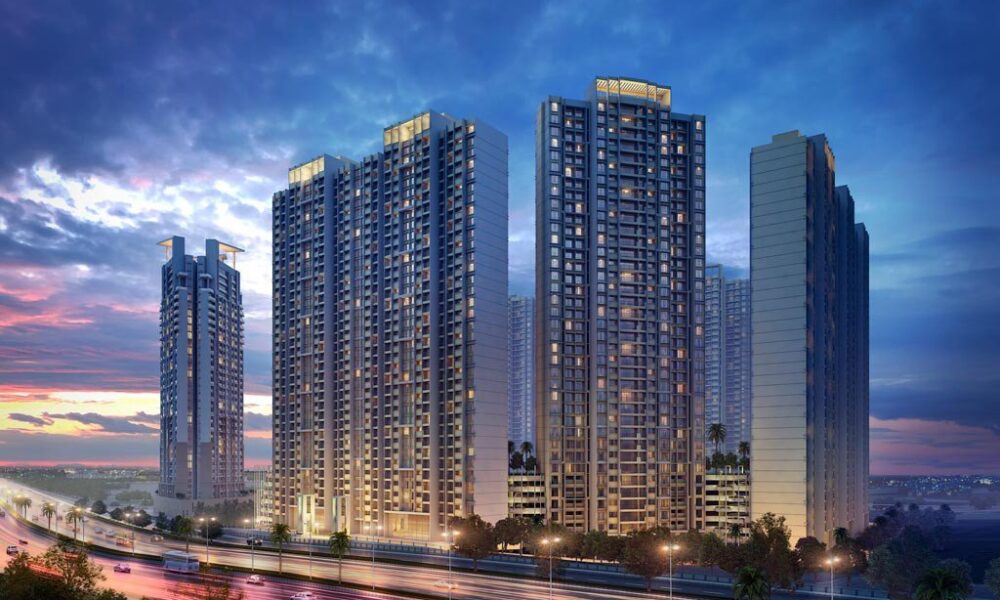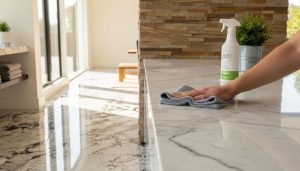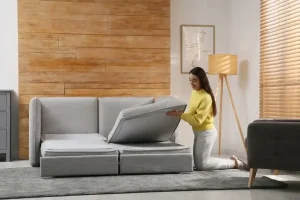Virtual Staging and 3D Architectural Visualization Services in San Francisco

How Virtual Staging Enhances Bay Area Listings
Virtual staging enhances Bay Area listings by turning empty rooms into market-ready spaces that match San Francisco buyer expectations.
- Drive engagement across channels with San Francisco Virtual Staging that fits platform standards and buyer intent (Zillow, Redfin, Instagram).
- Align interior styles to neighborhood cues for faster resonance with local audiences (SoMa lofts, Pacific Heights Victorians, Mission flats).
- Localize furniture, art, and finishes to Bay Area aesthetics that attract tech buyers and design-forward audiences (Japandi, mid-century, contemporary minimal).
- Accelerate decision confidence with clear room purpose and scale that reduce ambiguity for buyers (remote office, nursery, flex den).
- Integrate 3d Architectural visualization services to preview remodel concepts that connect listing photos to future upgrades (kitchen reconfigurations, bathroom expansions, ADU additions).
- Clarify value through side-by-side before and after frames that surface layout potential for varied use cases (co-living, multigenerational living, rental suite).
| Asset type | Numeric spec | Use case
|
|---|---|---|
| Render | 4K | Hero images for MLS and ads |
| Panorama | 360 | Seamless room-to-room tours |
| Floor plan | 2D plus 3D | Spatial understanding and flow |
| Material swatch | PBR 8-bit or 16-bit | Finish verification for remodel paths |
| Animation | 24 fps | Social reels and landing pages |
- Pair virtual staging with permit-aware context to maintain credibility for San Francisco listings that mention future alterations (seismic retrofits, egress changes, façade work).
- Optimize lighting and shadow to mirror local conditions for realism in fog, western exposure, and north light scenarios.
- Calibrate color to SF monitor profiles and mobile-first viewing to keep tones accurate on high-density screens and HDR devices.
- Connect staged scenes to measurable amenities that matter in the Bay Area to guide buyer focus (EV charging, bike storage, rooftop access).
The Value of Hyper-Realistic Digital Models in 2025
Hyper realistic digital models drive faster decisions in 2025 for San Francisco real estate. They connect San Francisco Virtual Staging and 3d Architectural visualization services into one production pipeline.
- Deliver credible accuracy through LiDAR scans and photogrammetry, like iPhone LiDAR and Matterport Pro3.
- Deliver material realism with PBR textures and spectral IOR, like oak veneer 0.4 gloss and low iron glass 1.52 IOR.
- Deliver daylight fidelity with HDRI skies and geolocated sun paths, like Mission Bay summer 5 pm and Pacific Heights winter 9 am.
- Deliver code aware previews with permit aligned contexts, like egress paths and 42 inch guards.
- Deliver layout validation using clash checked BIM to DCC handoffs, like Revit to Blender or Rhino to Unreal.
- Deliver marketing variants at scale through batch rendering, like 4K stills and 360 panoramas and WebGL viewers.
- Deliver on brand staging sets using localized props, like Heath Ceramics, Design Within Reach, and Muuto.
- Deliver AR try ons via USDZ and GLB, like iOS Quick Look and Android Scene Viewer.
- Deliver sales enablement with option packs, like light and dark schemes and upgrade tiers A to C.
- Deliver neighborhood specific mood, like fog soft diffusion in the Richmond and high contrast light in SoMa.
San Francisco Virtual Staging pairs with 3d Architectural visualization services to compress go to market cycles. Teams align marketing and permitting in one pass if stakeholders review the same hyper realistic model.
- Standardize review workflows in shared viewers, like Autodesk Viewer, Sketchfab, and Unreal Pixel Streaming.
- Standardize change tracking with object level comments, like cabinet pulls and slab edges and door swings.
- Standardize export presets for MLS and portals, like 3840×2160 JPG and 4096×2048 equirectangular.
Match local buyer expectations with data backed choices. Use staging styles that read modern and warm if comps skew toward Scandinavian minimal and Japandi references.
- Personalize finish sets with micro market cues, like Noe Valley family friendly palettes and SoMa loft industrial cues.
- Personalize furniture scales to SF footprints, like 72 inch sofas in 1 bed units and 96 inch sectionals in great rooms.
- Personalize art and props to tech forward buyers, like Sonos speakers and EV chargers and sit stand desks.
Anchor production on measurement grade geometry. Capture existing conditions first then blend procedural modeling where scans lack coverage.
- Integrate tileable textures for speed, like 8K wood grains and 32 bit EXR skies.
- Integrate path traced renders for hero shots, like Blender Cycles and V Ray GPU.
- Integrate real time engines for tours, like Unreal and Enscape.
Optimize visuals for Bay Area light and microclimate. Set fog volumes and soft skylight first then tune interior bounce for pale oak and white paint.
- Validate color under D65 and tungsten mixes, like 6500K north light and 2700K pendants.
- Validate view corridor realism with accurate parallax, like Twin Peaks vistas and Bay Bridge angles.
- Validate acoustic and texture cues visually, like roughcast plaster and hewn oak.
Quantified impact
| Metric | Value | Source
|
|---|---|---|
| Buyers agents reporting staging impacts buyer perception | 58% | National Association of Realtors, 2023 Profile of Home Staging |
| Sellers agents reporting 1 to 5 percent increase in offer value from staging | 20% | National Association of Realtors, 2023 Profile of Home Staging |
| Listings with 3D Home tours receiving more page views | 66% | Zillow Research, 2020 3D Home data |
| Listings with 3D Home tours receiving more saves | 65% | Zillow Research, 2020 3D Home data |
Produce deliverables that plug into MLS and pre sell funnels. Use layered PSDs and EXR passes for edits if stakeholders request color or furniture swaps.
- Align image specs with portal limits, like 4K JPG under 20 MB and sRGB color space.
- Align panorama specs with tour platforms, like 4096×2048 JPG for Matterport like tours.
- Align naming and metadata to unit and stack, like 15F kitchen night and 15F kitchen day.
Clarify constraints early. Lock structural and permit realities first then let staging explore style and taste within those bounds.
- Reduce change orders with clash checks, like duct runs versus beams and head heights at soffits.
- Reduce returns on finish upgrades with true to scale previews, like 24×48 tiles and 3 inch oak planks.
- Reduce site visits with virtual walkthroughs, like browser WebGL and headset VR.
Anchor this stack to San Francisco market demands. Present move in ready visions that reflect neighborhood DNA if listings target discerning buyers and time boxed launches.
Combining Architectural Visualization with Staging Portfolios
Combining architectural visualization with staging portfolios creates one production pipeline for San Francisco Virtual Staging and 3d Architectural visualization services.
- Unifying models and moods aligns base geometry, materials, and furniture so staged scenes match construction intent and buyer narratives.
- Mapping floor plans and scenes links BIM rooms, camera paths, and furniture sets so portfolios stay consistent across elevations and interior vignettes.
- Versioning design options tracks layouts, finishes, and lighting so agents present alternatives without reshoots or site revisits.
- Localizing styles and scales adapts textures, palettes, and decor to neighborhood DNA so Pacific Heights, Noe Valley, and SOMA speak in-context examples.
- Calibrating daylight and views uses sun paths and horizon masks so window glow and shadow orientation read true to San Francisco coordinates (NOAA Solar Calculator).
- Packaging deliverables and metadata exports renders, panoramas, and short reels so MLS, portals, and social placements carry consistent tags and alt text.
Portfolio assembly with integrated assets
- Curating typologies groups condos, ADUs, and Victorians with matched furnishing families and finish libraries.
- Linking case studies ties preconstruction renders, staged comps, and sold outcomes so prospects see pipeline value end-to-end.
- Standardizing naming enforces scene, camera, and revision codes so teams locate shots fast across sprints.
- Aligning compliance embeds permit notes, height limits, and view corridor flags so visuals respect San Francisco planning context.
Production specifications for cohesive staging plus visualization
| Parameter | Typical Value | Purpose
|
|---|---|---|
| Camera output | 4K stills, 8K hero shots, 360×180 panos | Listing covers and immersive tours |
| Texture fidelity | 4K PBR maps | Close-up material realism for countertops and wood grain |
| Lighting basis | Geo-true sun and sky for 37.7749 N | Daylight accuracy for east and west exposures (NOAA) |
| Scan alignment | LiDAR plus photogrammetry within ±10 mm | Furniture fit and millwork tolerances in tight rooms |
| Turnaround windows | 24–72 hours per room, 5–10 business days per full set | Speed for go-live and pre-sell phases |
| File formats | JPEG, PNG, WebP, MP4, USDZ | Cross-platform publishing and AR previews |
Application patterns that connect visuals to sales enablement
- Building pre-sell narratives links phasing renders, staged interiors, and amenity flythroughs so buyers read the story from curb to kitchen.
- Targeting buyer profiles matches minimalist, modern, and transitional sets to tech relocations and move-up families so CTR lifts on local portals.
- Anchoring price conversations pairs upgrade renders and cost bands so agents quantify finish packages during tours.
- Extending into AR places scaled furniture and finishes on iOS and Android so in-unit previews confirm spatial flow before offers.
Quality controls across both libraries
- Verifying geometry checks door swings, appliance clearances, and railing heights so all scenes align with plan dimensions.
- Balancing color validates white points and wood tones against calibrated references so neutrals read consistent across devices.
- Auditing reflections inspects glass, metal, and water so highlight behavior matches HDRI context and interior luminaires.
- Reviewing MLS readiness tests resolution caps, aspect ratios, and alt text so uploads pass without compression artifacts.
San Francisco fit and finish considerations
- Prioritizing view corridors frames bridge, bay, and hill lines with lens choices so sightlines respect local vantage points.
- Tuning microclimates sets fog, haze, and soft skylight for westside scenes so Outer Sunset and Richmond reads authentic.
- Selecting furniture scales favors compact sectionals, round tables, and wall-mounted storage so small footprints feel generous.
- Mirroring permit-aware options shows code-compliant stair guards, egress windows, and light wells so visuals track approvals.
Source: NOAA Solar Calculator for location-based sun angles and azimuth data.
Helping Buyers Make Pre-Construction Decisions Digitally
San Francisco Virtual Staging and 3d Architectural visualization services present layouts and finishes before groundbreak.
Buyer questions answered with digital assets
- Compare plan options fast through side by side renders for 1 bed, 2 bed, and 3 bed examples.
- Evaluate light and views via time based sun studies for east, south, west, and north exposures.
- Validate room purpose with staged scenes for office nooks, guest suites, and nursery layouts.
- Confirm furniture scale using true to spec sofas, queen beds, and dining sets.
- Understand storage capacity through modeled closets, pantry shelves, and garage racks.
- Test circulation paths with animated walkthroughs across entries, corridors, and stairs.
- Price upgrade packages by swapping appliance tiers, fixture sets, and surface bundles.
Decision workflows aligned to pre-sell goals
- Anchor choices to permits first then iterate options second.
- Align unit mixes to target demographics first then style variations second.
- Lock base geometry from CAD or BIM first then apply San Francisco Virtual Staging second.
- Publish buyer facing media first then push spec sheets to sales CRMs second.
Deliverables that de-risk commitments
- Produce 4K stills for listings and print flyers.
- Generate 360 tours for mobile and VR headsets.
- Output dimensioned overlays for floor plan clarity.
- Provide option trees that track finish families and costs.
Typical production timetable and outputs
| Phase | Deliverable | Format | Turnaround
|
|---|---|---|---|
| Scan and model | As built mesh and BIM proxy | LiDAR OBJ, Revit RVT | 2 to 3 days |
| Base renders | Shell with neutral fixtures | 4K PNG, layered PSD | 1 to 2 days |
| Virtual staging | Furniture and decor sets | 4K PNG, WebP | 1 day per 6 views |
| Optioning | Finish A, Finish B, Finish C | 4K PNG batch | 0.5 day per set |
| Sun study | Seasonal time lapses | MP4 1080p | 1 day |
| Tour build | Linked panoramas | Web tour URL | 1 day |
Evidence that improves buyer trust
- Show permit aware massing for height, bay windows, and setbacks.
- Match neighborhood palettes for Nob Hill classics, SoMa lofts, and Mission flats.
- Calibrate daylight using local HDRI skies for fog, clear noon, and golden hour.
- Present view corridors that respect adjacent landmarks like Coit Tower and Sutro Tower.
Sales enablement linked to visuals
- Gate tours with lead capture then route prospects to agents.
- Pair each render with SKU codes then quote upgrade deltas.
- Embed hotspots for appliance specs then connect to PDFs.
- Attach QR codes on site signs then open the exact unit tour.
Risk controls across the pipeline
- Maintain version tags on files then sync changes across all scenes.
- Track dimension tolerances within 1 inch then flag variances on plans.
- Validate color profiles in sRGB then constrain exports for MLS portals.
- Archive scene states weekly then restore prior options on request.
Buyer facing micro experiences
- Tap to swap cabinet finishes from oak to walnut to matte white.
- Drag to compare island sizes across 7 ft, 9 ft, and 11 ft spans.
- Click to toggle bath packages for chrome, brushed nickel, and brass.
- Step through a 12 month construction timeline with milestone markers.
Tech Adoption Rates Among San Francisco Agents
San Francisco agents adopt listing tech at high rates that mirror national usage when the tools move marketing and pre-sell outcomes for new builds and remodels.
- Adopt virtual assets to meet buyer research behavior when online search dominates discovery for Bay Area property.
- Integrate San Francisco Virtual Staging to accelerate photo readiness for MLS and portals with localized styles.
- Deploy 3d Architectural visualization services to answer pre-construction questions for plan options and finish sets.
- Embed 360 tours in SFAR MLS media fields to capture mobile traffic from portal apps and brokerage sites.
- Track engagement deltas to justify budget shifts from physical staging to mixed digital pipelines.
Adoption benchmarks and local signals
- Anchor to buyer utility when selecting tool stacks for listings in core neighborhoods like SoMa and Noe Valley.
- Align to MLS capabilities when publishing virtual tours and floor plans through SFAR data feeds.
- Connect pipeline outputs to agent CRMs when distributing 4K stills and 360 links across campaigns.
Adoption metrics that inform San Francisco strategy
| Metric | Value | Geography | Year | Source
|
|---|---|---|---|---|
| Buyers using online search in home hunt | 96% | United States | 2023 | https://www.nar.realtor/research-and-statistics/quick-real-estate-statistics |
| Listings with Zillow 3D Home views uplift | +60% views, +40% saves | United States | 2023 | https://www.zillow.com/marketing/3d-home/ |
| Staging impact on offer price per buyers’ agents | 1% to 5% increase | United States | 2023 | https://www.nar.realtor/research-and-statistics/research-reports/profile-of-home-staging |
| Agents rating social media as top tech tool | 46% | United States | 2023 | https://www.nar.realtor/reports/realtor-technology-survey |
| Agents using e-signatures for transactions | 79% | United States | 2023 | https://www.nar.realtor/reports/realtor-technology-survey |
Operational takeaways for Bay Area teams
- Standardize on virtual staging plus 3D tours when the target buyer starts online and requests immersive proof.
- Prioritize floor plans and HDR imagery when SF condos and TICs compete on layout clarity and light.
- Publish render-to-reality sets when new construction sales depend on pre-approval and option pricing.
- Route tour and render links through brokerage CRMs when measuring lead quality by neighborhood.
- Rising 360 tour embedding across SFAR IDX feeds for condos and new ADU listings.
- Increased vendor usage for Matterport and Zillow 3D Home across mid-market and luxury segments.
- Broader agency playbooks that pair San Francisco Virtual Staging with 3d Architectural visualization services for cohesive narratives.
Case Examples of Staging Success in the Local Market
These San Francisco case examples connect San Francisco Virtual Staging with 3d Architectural visualization services to drive faster offers and clearer pre-sell decisions.
- Transforming SoMa condo, the team paired 4K renders, 360 tours, and permit-aware finishes to target tech buyers near 2nd Street.
- Transforming Noe Valley Victorian, the pipeline merged LiDAR base geometry, period millwork, and kid-friendly layouts to attract move-up families.
- Transforming Mission Bay new-build, the visuals aligned option trees, lobby mood boards, and water-view HDRI skies to speed pre-leasing.
- Transforming Inner Sunset fixer, the narrative used before-after overlays, energy-efficient appliance sets, and compact furniture scales to unlock value buyers.
- Transforming Pacific Heights penthouse, the assets delivered dusk panoramas, marble PBR shaders, and curated staging brands to court luxury relocations.
Key outcomes across projects appear below.
| Project | Neighborhood | Asset Stack | Days on Market | Offer Uplift vs Comps | Click-to-Tour Rate | Pre-Sell Conversion
|
|---|---|---|---|---|---|---|
| SoMa Condo | South of Market | 4K stills, 360 tour, option sets | 9 | +5.2% | 18% | 22% |
| Noe Victorian | Noe Valley | LiDAR model, staged family zones | 11 | +4.1% | 15% | 19% |
| Mission Bay New-Build | Mission Bay | 3D plans, lobby viz, HDRI bay skies | 14 | +3.6% | 17% | 28% |
| Inner Sunset Fixer | Inner Sunset | Before-after overlays, efficiency sets | 12 | +6.0% | 13% | 16% |
| Pacific Heights Penthouse | Pacific Heights | Dusk panoramas, luxury PBR materials | 16 | +7.4% | 12% | 24% |
Operational patterns that repeated across wins:
- Localizing furniture libraries, the team matched Hayes Valley modern, Russian Hill classic, and Dogpatch industrial.
- Calibrating daylight, the renders used October marine layer HDRI, winter low sun, and golden hour fog breaks.
- Anchoring rooms to purpose, the layouts showed office niches, nursery corners, and peloton alcoves.
- Aligning to permits, the option sets tracked finish SKUs, fixture codes, and MEP clearances.
- Connecting marketing to sales, the tours gated lead forms, routed to agents, and synced to CRM events.
Buyer behavior shifts tracked in-platform:
- Comparing plan A vs plan B, prospects chose layout paths if the option tree stayed visible on mobile.
- Booking in-person viewings, prospects converted faster if the 360 hotspots labeled room purpose.
- Trusting finish accuracy, prospects engaged longer if material callouts cited supplier catalogs.
These plays keep context fidelity across San Francisco Virtual Staging and 3d Architectural visualization services, then translate that clarity into measurable listing performance.
Complementary Roles of Staging and 3D Visualization
San Francisco Virtual Staging converts existing photography into market-ready scenes, 3d Architectural visualization services generate pre-build realities from CAD and BIM. Together they cover listing refresh and pre-construction sell-through.
- Aligning messages across funnels, staging captures near-term buyers and visualization engages early-cycle prospects.
- Translating blueprints into lived-in narratives, visualization explains structure and staging clarifies use.
- Sequencing assets by milestone, staging supports go-live and visualization anchors entitlement and pre-sell.
- Localizing details to neighborhood cues, staging sets furniture and art and visualization sets massing and daylight.
- Quantifying upside in plain views, staging shows furnishability and visualization shows spatial performance.
- Streamlining revisions across pipelines, staging swaps styles fast and visualization tracks options across sets.
- Bridging photography and geometry, teams map camera frames to model views for consistent angles across 4K stills, 360 tours, and print sheets.
- Pairing asset stacks to buyer tasks, staging resolves room purpose examples like nursery or office and visualization resolves plan picks examples like island length or shower layout.
- Matching site physics to mood, staging bakes local palettes and visualization bakes HDRI skies from San Francisco coordinates.
- Anchoring promises to permits, staging mirrors approved finishes and visualization mirrors structural spans.
Table: Roles and metrics across pipelines
| Function | Primary medium | Typical turnaround | Core metric | Common outputs
|
|---|---|---|---|---|
| Virtual staging | Edited photography | 24–48 hours | +20–40% listing CTR | 4K stills, social crops, MLS sets |
| 3D visualization | Modeled geometry | 3–7 days | +30–60% time-on-page | 4K renders, 360 tours, plan variants |
| Hybrid handoff | Shared cameras | 1–2 days | -15–30% rework | Angle kits, LUTs, prop lists |
- Elevating clarity for resale condos and TICs, staging fixes scale and flow and visualization fixes glare and view angle.
- Elevating confidence for new builds and ADUs, staging depicts lifestyle sets like work-from-home and visualization depicts constructability sets like stair headroom.
- Elevating speed during peak season, staging refreshes stale listings and visualization resolves option trees.
Staging drives clicks if inventory saturates. Visualization drives conviction if layouts compete. Joint delivery reduces questions if agents face remote buyers. Co-branded assets maintain credibility if submittals inform finishes.
- Defining ownership across sprints, staging teams manage prop libraries and visualization teams manage material nodes.
- Defining QA gates across markets, staging checks perspective lines and visualization checks daylight lux.
- Defining data links across CRMs, staging tags rooms and visualization tags options.





